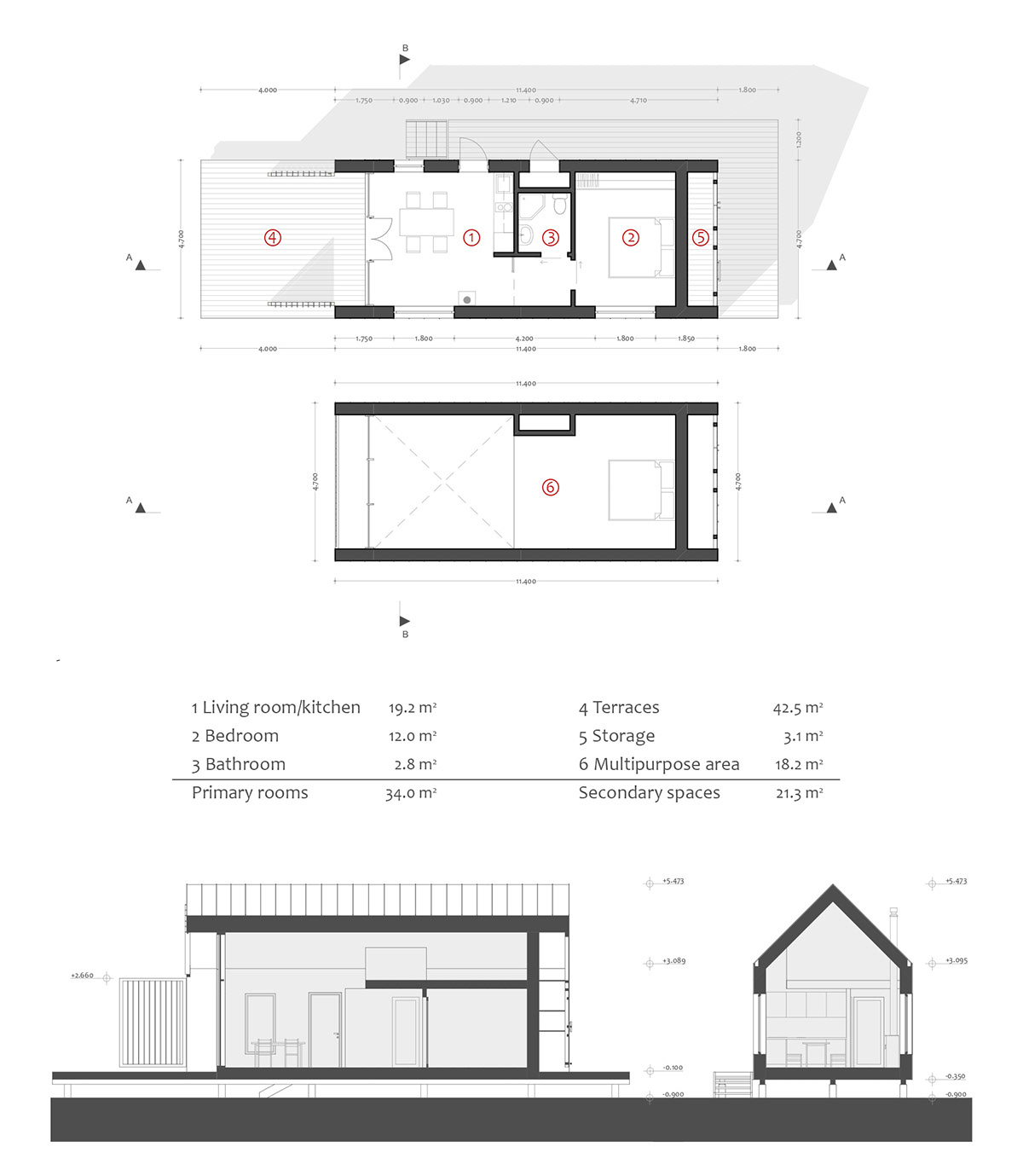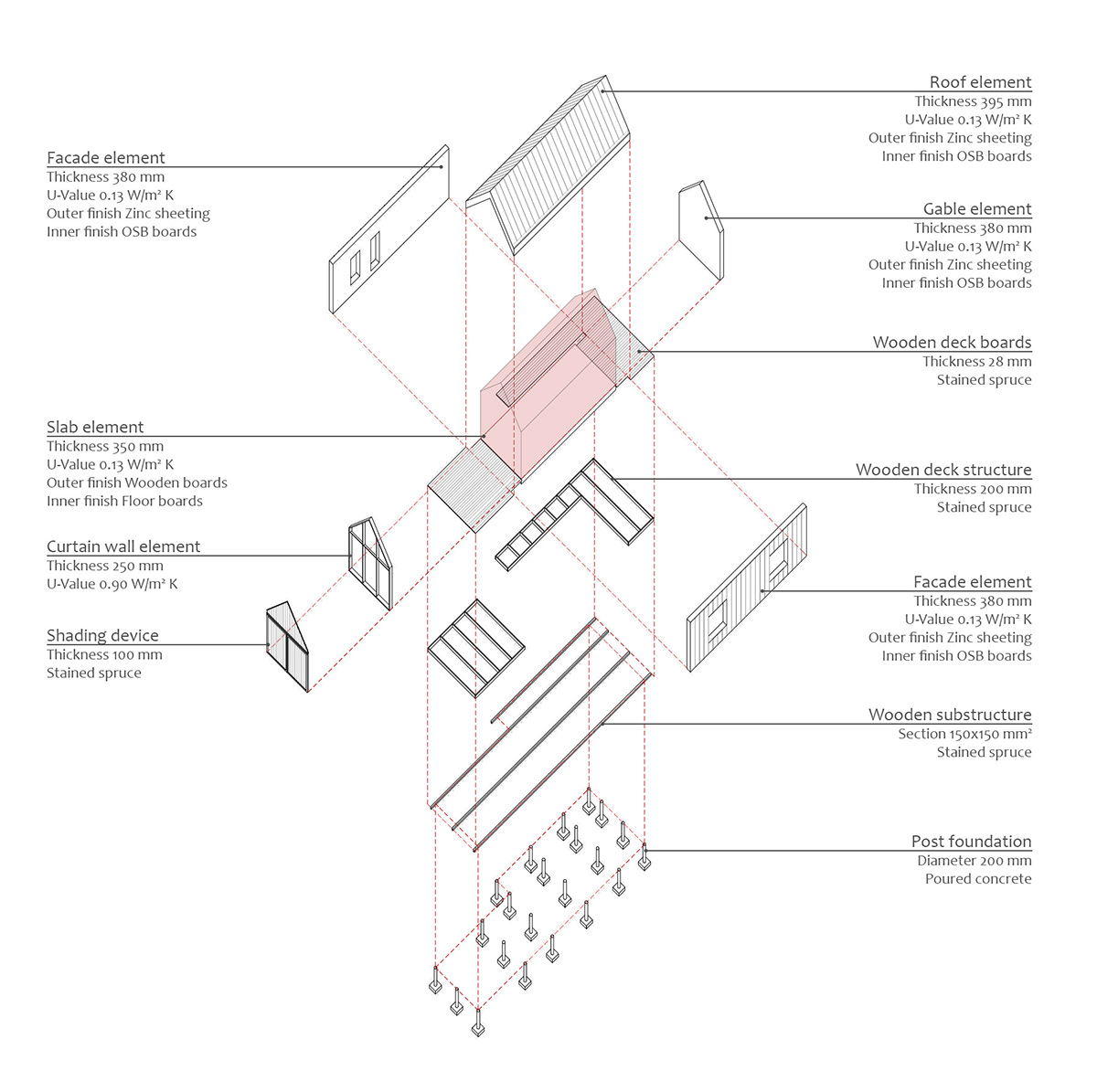COASTAL CABIN
These accommodation cabins are located on the sea shores of the revitalised villages on the archipelago. Usually rough and rocky landscapes or littoral zones with little natural shelter describe the environment of these areas. Therefore the cabins are affected by weather conditions that arrive by the sea. Some of the environmental conditions include high humidity, tidal currents, and winds.
The design of the coastal cabin tries to tackle these issues. The height of the cabin is low and with minimum breaks in the facade. This allows winds to pass the building without major turbulence. The outer finishing material of both the facade and roof is zinc-titanium sheeting which has a durable lifespan in analogous climate conditions. To protect the building from extremely high humidity levels and consequent moisture damage, the facades and roof are fully ventilated. This ensures a constant air-flow that creates an uninterrupted drying process. The building is exposed to solar radiation on sunny days. This creates a risk of overheating of the inside spaces. To prevent this, the cabin is equipped with shading devices that can be regulated by the users according to their needs. Also the curtain wall on the western facade has been ‘hidden’ from absolute direct sun exposure. To protect the building from harmful salty tidal currents, the cabin has been elevated and placed on a post foundation. This allows the sea water to run under the building without jeopardising the cabin’s structural integrity.










